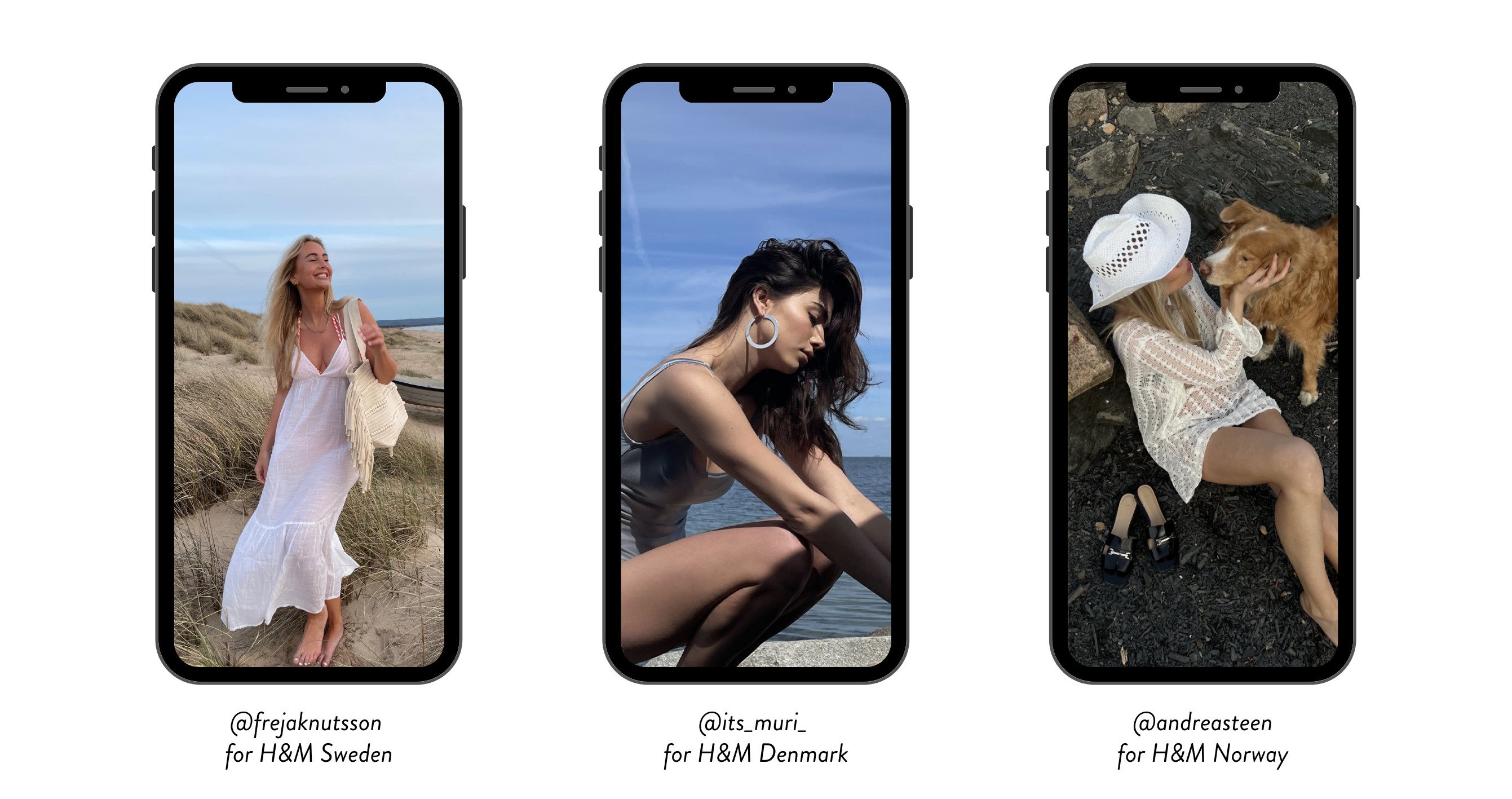As the Nordic region is becoming a major player in Europe, more and more brands are looking to take advantage of the opportunities that come with influencer marketing in this area. With the varying cultures, languages, and trends of the different countries though, brands need to be aware of the nuances that can make or break their influencer marketing efforts in the region. We sat down with three of our campaign managers, who are experts within the different markets, to pick their brains on what differences and similarities there are, from an influencer marketing point of view.
Similarities between the Nordic countries
When comparing the Nordic countries with their European counterparts, one of the major distinctions is the size of their influencer pool. While there are a decent amount of influencers in each country, the total pool in each is much smaller than what you’d find in many other areas. Therefore, you need to have a good understanding of the local trends in order to pinpoint the most appropriate influencers for your brand.
Another factor to keep in mind when looking for influencers in the Nordics is the language barrier. Whilst most influencers in the area speak English, they may not pick up on the finer points of the language as well as native speakers. They may also communicate with their audience in their own local language, so brands need to be prepared to adapt. Also, the local following of influencers in the area tends to be more regional, while English speaking ones usually have a more global reach given the language’s prevalence. This localised focus is a real plus for brands looking to target people in that particular market.

Differences between the Nordic countries
If we take a look at how expansive the pool of influencers is, it’s clear that Sweden is a much bigger market than the other regions. This probably doesn’t come as a shock seeing as the population is almost twice as large. Additionally, Sweden is widely known for being a few steps ahead in terms of the latest trends.
TikTok
When it comes to TikTok, the fastest growing social media platform on the influencer marketing scene, this differs a bit between the different markets. According to Annicka Johansson, Senior Campaign Manager at Cure Media, “creators in Sweden and Norway tend to be one step ahead when it comes to collaborations on TikTok. They are more experienced with the platform and quicker to embrace the latest trends, and they know how to make their videos go viral”, This can also be seen in the different levels of platform penetration between the various markets; in Sweden and Norway, around 40% of internet users are active on TikTok, compared to 28% in Denmark and even lower in Finland.
Influencer content
If you take a closer look at Denmark, it’s widely seen as the fashion hub of Scandinavia, and this is also manifested on the influencer scene. According to Vilma Lindgren, Campaign Manager at Cure Media, “Danish creators are at the top of the game when it comes to crafting top-notch content – they really know how to grab your attention”. She goes on to add, “In Denmark, the influencers’ personal brand is of huge importance, and they like to highlight local brands and designs”. Another trait that sets Denmark apart from the other countries is that influencers are managed by agencies and managers to a greater extent.
Another thing that sets the different countries aside is the characteristics of the typical influencer content. If Denmark stands for fashion and interior, the typical Norwegian influencer focuses more on wildlife and adventures, or DYI projects: “The influencer content often reflects the influencer’s lifestyle, so it’s natural that the local heritage and typical lifestyle can be spotted in the collaborations as well”, says Amanda Boberg Östlin, Senior Campaign Manager at Cure Media.
Average engagement rates
When comparing average engagement across different markets, subtle disparities can be seen. Vilma notes that it can be a bit more tricky to get high engagement on the Danish front, whereas Finland appears to be the market where influencer collaborations usually generate the highest average engagement. This was reflected in the campaign stats from Cure Media’s collaborations from 2022 to 2023, where the average engagement for Denmark was 2.62%, with Finland being a full 40% higher at 3.67% across both TikTok and Instagram collaborations.
In conclusion, every market requires unique strategies and goals, depending on the nature of the market. By being aware of the differences between the Nordic countries and how to best utilise influencers in each region, brands can build an effective influencer marketing strategy to successfully reach their target audience.


